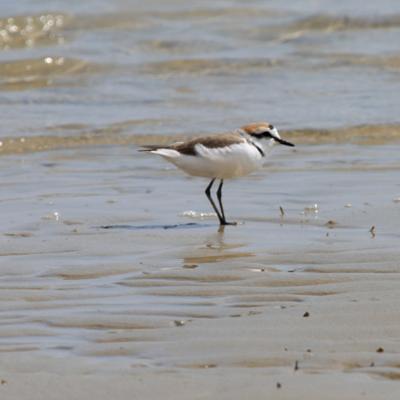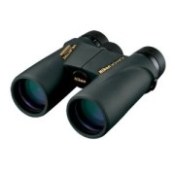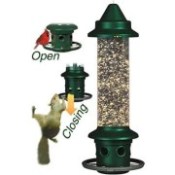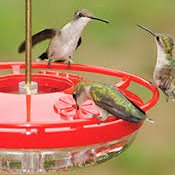
Kentish Plover Bird ID
Q: This photograph was taken on the shores of the Red Sea in Egypt, please can you help identify the bird for me? John Fewtrell (Ekeren, Belgium)

A: This is a Kentish Plover (Charadrius alexandrinus). There are five races:
- Nominate Race (N Africa, W Europe to Korea)
- Race seebohmi (Sri Lanka, SE India)
- Race dealbatus (Japan, E China)
- Race occidentalis (coastal Peru and Chile)
- Race nivosus (USA, Carribean)
It is a very small plover, 150-175 millimeters in length (6.5") with fairly long darkish legs, slim dark bill, a white hind neck collar and dark lateral breast-patches (never a complete breast-band).
Male field marks: The plover in your photo is a male in breeding plumage with the black frontal bar, eye-stripe from bill to ear-coverts, and sharply defined patches at sides of breast. The rufous color on the cap is very variable, some show entirely chestnut crown.
Kentish Plovers have a similar appearance in pattern to North American Snowy Plovers.
Nesting
Kentish plovers nest chiefly on sandy beaches, either on the coast or by brackish or saline inland wetlands.
Both the male and female will take turns incubating the eggs. During the non-breeding season, it is mainly coastal, but also regular at some brackish or saline lakes.
Food & Feeding
Primary food source are invertebrates, both terrestrial and aquatic.
Feeding action is faster than in Ringed and Semipalmated Plovers.
Social Flocks
Kentish Plovers are a very social bird, in small to large single-species flocks or mixed with flocks of other small waders such as Piping Plovers.
Male Kentish Plover
Kentish Plover, Non-Breeding Plumage
Related Bird Identification Pages
Kentish Plover - More information regarding geographic range, habitat, physical description, reproduction, behavior, food habits and conservation status.
|
Our Favorite Bird Watching Binoculars, Squirrel-Proof Feeder & Hummingbird Feeder Read Our Reviews: |
||

Nikon Monarch M5
Best mid-priced bird watching binoculars. Waterproof, shockproof, multi-coated ED-Glass. |

|

Best Hummingbird Feeder
Drip-Free, Ant-moat, Durable, Easy to Fill and Clean. |
| Click Images or Links To View More Info | ||